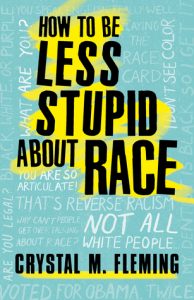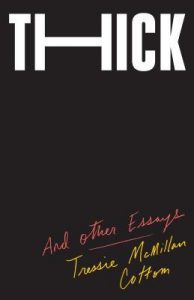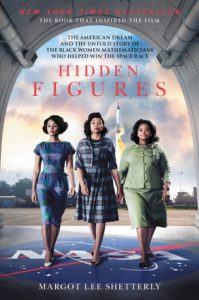 I mentioned this in the first post on children’s books for Black History Month, but when we think about BHM, I feel like the first thing that comes to mind is probably either 1) slavery, or 2) civil rights. And for Black history in North America, those are definitely things we cannot afford to forget or pretend that it no longer affects Black people, but you know what else? I’m also willing to bet that when the majority of us think about slavery, it’s slavery in the U.S. that comes to mind. But in case we missed this in our history classes, or forgot about it since we learned about it maybe in elementary school: Black people were enslaved in Canada too, for around 200 years. So to start off this week’s post, check out this episode of The Secret Life of Canada podcast to learn more: The Secret Life of Birchtown – listen to it, look through the articles and videos it links to, and then think deeply about whether, or how, this changes your perception of Black history in Canada.
I mentioned this in the first post on children’s books for Black History Month, but when we think about BHM, I feel like the first thing that comes to mind is probably either 1) slavery, or 2) civil rights. And for Black history in North America, those are definitely things we cannot afford to forget or pretend that it no longer affects Black people, but you know what else? I’m also willing to bet that when the majority of us think about slavery, it’s slavery in the U.S. that comes to mind. But in case we missed this in our history classes, or forgot about it since we learned about it maybe in elementary school: Black people were enslaved in Canada too, for around 200 years. So to start off this week’s post, check out this episode of The Secret Life of Canada podcast to learn more: The Secret Life of Birchtown – listen to it, look through the articles and videos it links to, and then think deeply about whether, or how, this changes your perception of Black history in Canada.
If you’ve been living under the impression that we live in a postracial society, this post & the recommended reads might make you uncomfortable (as I assume is made evident by the title), but I think it’s worth the discomfort, so I hope you stick with it. At the very least, I hope that it starts a conversation or more sustained thoughts on the topic of race and the ways in which we are all affected by racism.
Before I start going into a couple of recently published books about racism, sexism, and the intersection between, I’d just like to do a shout-out to a post Lonnie wrote last year about W. E. B. Du Bois’ The Souls of Black Folk. The following recommendations would be a great follow-up to Souls, to see how racism in America (because these are written primarily about the U.S.) has – or hasn’t – changed over the 100+ years since Du Bois wrote Souls in 1903.
So let’s talk about racism. I’m going to paraphrase some of the things that Crystal Fleming talks about in her introduction to How to Be Less Stupid About Race: On Racism, White Supremacy, and the Racial Divide, though she does such an amazing job of discussing issues of race that I urge you to read her in her own words. This is an incomplete list, but I think it’ll get us started – racism is (among other things):
- Still an issue. Yes, this is 2019. Yes, it’d be lovely if it being 2019 meant that we were all living in a postracial society. Sorry to break it to you, those of you who are under the belief that we do, but this is not the case. (Not sorry.) And although Fleming is speaking about the U.S., most everything she says, except perhaps some of the stats she quotes (for obvious reasons), still applies.
- Not just a matter of individuals’ racist beliefs and actions. There is racism on the individual level and racism on the systemic level. When we talk about white supremacists and the actions of racist individuals, that is on the individual level. But systemic racism doesn’t require that all white people are racist individuals.
- Systemic racism is not just negative stereotypes or prejudices: “Though everyone internalizes stereotypes about social groups, we do not all occupy the same position in the racial order. When members of a so-called “racial” group are able to impose their prejudices in ways that reliably benefit them and disadvantage others, they have managed to successfully institutionalize their racist beliefs and protect their racial privileges” (p.13). This is also why “reverse racism” is not a thing.
- Not a lone operator. Racism can and does work with sexism and other modes of oppression, and discussions about these intersections between them are referred to as intersectionality.
- Speaking of intersectionality, a recent event took place at the ALA (American Library Association) should serve to remind us that there is work to be done everywhere.
One of the things I love about How to Be Less Stupid About Race is – actually scratch that: among many of the things that I love about this volume are that 1) Fleming defines her terms (e.g. race, systemic racism, antiracists, white supremacy, etc.), 2) addresses common fallacies, including “the KKK Fallacy, the Gaslighting Fallacy, the Class Fallacy, the Whites-Only White Supremacy Fallacy, the Political Fallacy, and, my personal favorite, the Black Supremacy Unicorn Fallacy” (pp. 15-16), and 3) is incredibly thorough and articulate! I knew about most of the fallacies, if not by those names, but I still found it very helpful that Fleming debunks each of these myths in pithy & easy to understand sections.
Fleming describes this book as a course, and I am inclined to agree, because though this is far from the easy to digest Racism in America 101 that I was expecting to receive (given the title), How to Be Less Stupid About Race is a wide-ranging, in-depth primer that prepares you for doing future research of your own – and Fleming does a great job making you want to do your own digging to learn more! She prepares you for the job by giving you enough information to go on and names to look up, referencing other books & articles complete with endnotes so you can find them easily, and I think she makes a very convincing argument in each of her chapters. Throughout this volume, Fleming takes the reader through:
- Critical Race Theory
- The intersection between being Black and being a woman and the importance of listening to Black women
- The Obama era
- How a nation that voted for Obama – twice! – could go on to then vote for Trump; does it follow? Spoiler alert: yes.
- The dissemination of fake racial news & media that perpetuates negative stereotypes about Black people (and other POC) while simultaneously spreading positive stereotypes about white people, and how this works to uphold the status quo that is systemic racism
- Interracial love and how it’s not a cure-all for racism. Fleming points out something that’s almost hilarious in how self-evident it should be & also hard to refute that, well, inter-sexual love has failed all these generations to destroy sexism, so why should anyone expect interracial love to be the panacea? Which… true.
- What to do now with all this information?? It’s overwhelming, and there’s no easy answer or quick fix, but Fleming gives you some steps that follow that can help guide you through what to do with all this information.
I have a lot of bookmarked passages throughout the pages – so many that I ran out of bookdarts to keep track of every one – and I’m sure you would love to read 10,000 words on what I thought about certain paragraphs and what it reminded me of and what I’d like to know more about given the information in that chapter, but something tells me this is where I should stop.
In short, this volume took me on a rollercoaster of emotions from outrage to disappointment (in humanity) to disgust (at humanity) to seeing me laughing out loud at some of the things Fleming writes – and I think I came out of the journey better informed about racism in America. So I’ll conclude with this message: READ IT. Put yourself on hold for How to Be Less Stupid About Race! We have 2 copies, one of which is available right now, so it shouldn’t take long to get to you!
I’ve got some more recommendations below the cut, starting with Thick: And Other Essays by Tressie McMillan Cottom, and Hidden Figures by Margot Lee Shelley.
 I was reading this collection of essays concurrently with How to Be Less Stupid About Race, and I think they’re wonderful companions to each other: Thick: And Other Essays by Tressie McMillan Cottom (this link goes to Goodreads, but we do have an e-book copy available on HooplaDigital as well – there’s just no record yet on our catalogue to link to).
I was reading this collection of essays concurrently with How to Be Less Stupid About Race, and I think they’re wonderful companions to each other: Thick: And Other Essays by Tressie McMillan Cottom (this link goes to Goodreads, but we do have an e-book copy available on HooplaDigital as well – there’s just no record yet on our catalogue to link to).
McMillan Cottom writes about a wide range of topics that are all personal, but are also larger & more far-reaching than a personal essay. Some of them, like “Dying to be Competent” are particularly heart-wrenching, and makes painfully obvious the injustice done to Black people, especially Black women in this particular essay (although also more generally, as Black women are hit by the double whammy of racism & sexism). It’s easy to think that we’ve escaped the clutches of eugenics and the times that saw it as a solution for society’s problems, but in Dying to be Competent, McMillan Cottom shows the reader how this is still being done in other ways, ways that are less visible, less obvious, because it’s in the neglect. It’s in the assumption that Black women are incompetent when it comes to themselves, their own bodies. It’s the assumption that Black women’s pain doesn’t need to be taken as seriously (again, women’s pain more generally also). It’s in the blame that was placed on McMillan Cottom by the nurse after, even though it was the health authorities that dismissed her at every turn, neglected to take her concerns seriously, that prevented her from being recognized as a woman in labour for three days – it’s in the death of her baby girl.
McMillan Cottom tackles a wide variety of topics in this collection of essays, and in each essay also touches upon quite a range of seemingly disparate subjects, somehow weaving all of them together in a cohesive manner. She shifts seamlessly between different styles of writing throughout, at times more personal and colloquial, at times more scholarly, staying accessible at all times. I couldn’t wait to get the chance to read another essay whenever I had the chance, and Thick: And Other Essays is available as an e-book on HooplaDigital (free access with a VPL card) so that you can read it anytime, anywhere! Check it out today!
Since we’ve been standing quite squarely at the intersection between sexism & racism for the past two books, I feel like this next recommendation fits in well. A bit of a change of pace from the beginning of this post, Hidden Figures is a celebration of the contributions of Black women to some of the greatest achievements of NASA, telling the story of four African American women – Dorothy Vaughan, Mary Jackson, Katherine Johnson, and Christine Darden – and the challenges they faced to get where they did.
We own Hidden Figures in many formats, including the movie, the book by Margot Lee Shetterly, which is also available in two junior editions: Hidden Figures Young Readers’ Edition and Hidden Figures, by Winnifred Conkling & illustrated by Laura Freeman, based on the original by Lee Shetterly.
What I especially enjoyed about the book is that Lee Shetterly does a really good job making this true story readable & moving, as well as locating it within the historical context that allows the reader to understand how white supremacy (not in those words) routinely undercuts what resources Black people (and other minorities) have access to, and points out how that is actually to the detriment of us all.
I haven’t watched the movie yet, but I did happen to stumble upon this very interesting page on Information is Beautiful that details how much of the movie is true to facts (they have done the same with other movies based on true stories as well, if you’d like to run through them). What I particularly love about the infographic is that you can click on each slice and it will go into more detail about why something is categorized as true (according to what) and why another as false.
And now I’m going to end off with a list of other recommended titles that may be of interest to you if you enjoyed or would like to read the titles above:
- Playing in the Dark: Whiteness and the Literary Imagination by Toni Morrison
- Morrison speaks on the construction of whiteness in literature and how it is created in diametric opposition to “darkness”, as well as speaking on how Black characters function as a stand-in for the author’s fears & desires, allowing the white characters (and by extension white readers/viewers who identify with them) to experience and explore these fears & desires in themselves without actually having to experience it.
- So You Want to Talk About Race by Ijeoma Oluo
- This might’ve been more what I had in mind when I read the title “How to Be Less Stupid About Race”, and I’ve put it on hold for myself already. The comments & ratings are very promising!
- White Fragility by Robin J. DiAngelo
- The subtitle says enough, I think: “Why it’s so hard to talk to white people about racism”. If talking about racism bothers you, and you often find yourself feeling angry and defensive, this might be the read for you!
- Tears We Cannot Stop by Michael Eric Dyson
- We have this available in print as well as on Overdrive/Libby as an e-book & e-audiobook (though it doesn’t show up on our catalogue, I have it borrowed, so I know for a fact we have it).
- Edited to add: Stamped From the Beginning by Ibram X. Kendi – thanks for the suggestion, Lonnie!
- “an absolutely brilliant re-envisioning of racism in America–how it derived, how it was handled, and what to do now”

Another great post, Karen!
I’d add to your list Stamped from the Beginning: an absolutely brilliant re-envisioning of racism in America–how it derived, how it was handled, and what to do now.
Thanks Lonnie! I’ve added your suggestion to the list!
Great post – and definitely more thought out and eloquent than anything I could’ve written, but this: “In short, this volume took me on a rollercoaster of emotions from outrage to disappointment (in humanity) to disgust (at humanity)”, this, is a definite mood. I’ll have to check it out.
Thank you! I’m glad this was the one line that made you want to check it out – let me know what you think! See if it takes you on the same rollercoaster as it did me.